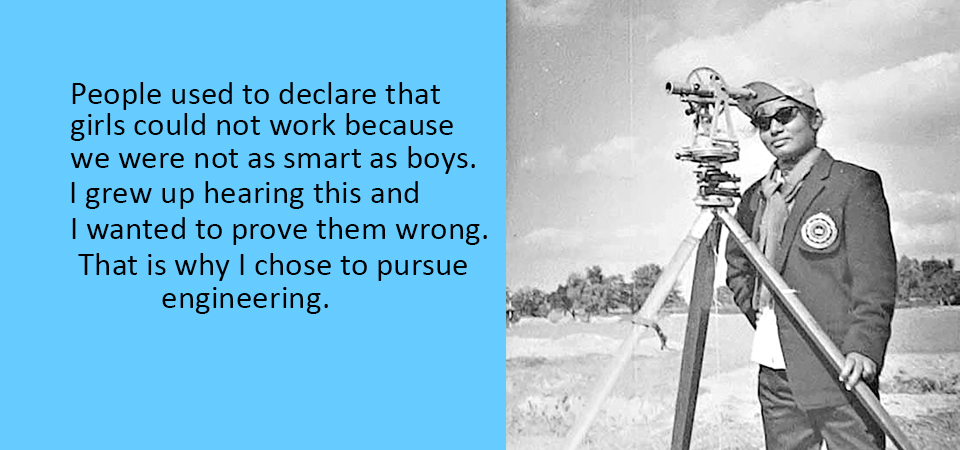Inspiring Women
Nepal’s first woman engineer recounts odds she faced all along

By Aashish Mishra
Kathmandu, Mar. 22: If you have ever walked by the office of the Agricultural Development Bank in Ram Shah Path, the old computer centre on the Singha Durbar premises or the Birendra International Convention Centre (present-day seat of the federal parliament), you have walked by the buildings designed, fully or in part, by Nepal’s first female civil engineer Shanti Malla.
At 77 years of age, Shanti leads a nondescript life managing the school she founded, Ananda Vidya Mandir, in Narephant. But she is not ready to take it easy. She has never been one to shy away from challenges and, in her life, challenges were aplenty. In fact, being born a girl was in itself a challenge, as she puts it. “People used to declare that girls could not work because we were not as smart as boys,” Shanti said. “I grew up hearing this and I wanted to prove them wrong. That is why I chose to pursue engineering.”
Shanti was more than qualified for the subject. Her abilities in maths and science were exceptional, her English was exemplary and her grades were good enough to secure her a scholarship at Jadavpur University, Kolkata, India. Yet, there were still people who doubted her, people who cringed their noses at the thought of a woman pursuing a technical field like engineering. They questioned her father Pushpa Bhakta Malla about letting his daughter study, that too in another country.
Her hands are meant to cook, not to hold equipment, some said, according to Shanti, while others were confident that she would fail her course. But her father did not let any of these comments get to him. He allowed and supported Shanti following her heart.
Pushpa Bhakta Malla, himself, was a “first.” He was the first student in Nepal’s history to top the board in the School Leaving Examinations – the first SLC board first – back in 1933. He was also one of the first mining engineers of the country and worked as the director-general for the Department of Mines and Geology.
Pushpa Bhakta never held his eldest daughter Shanti back. She went to Kolkata. At Jadavpur, there were 124 students in her batch, 123 men and Shanti the sole woman. “As a result, the university needed to make special arrangements for me. For example, during camps and field visits, the male students used to sleep together in tents but the university used to transport me back to the campus every night and then take me to the field every morning,” she recounted.
Shanti graduated with a Bachelors’ degree in Civil Engineering (BCE) in 1966 and returned to Nepal the same year. By the time of her graduation, she had married one of her classmates and had two children – a son and a daughter. “We were together in school as well and when he said he wanted a life together, I agreed,” she remembered. However, upon returning home, she found that her husband already had a wife and children here. She left him immediately.
She joined the Department of Urban Development and Building Construction (back then called the Building Department) in 1966, becoming the first woman there, and served there for 36 years until her retirement in 2002. She should have been able to serve for 40 years but a clerical error with her date of birth forced her to retire early. She also feels that she should have retired as the secretary of the department but her promotions were stalled because she was not able to “butter up” her superiors.
Recent News

Do not make expressions casting dout on election: EC
14 Apr, 2022
CM Bhatta says may New Year 2079 BS inspire positive thinking
14 Apr, 2022
Three new cases, 44 recoveries in 24 hours
14 Apr, 2022
689 climbers of 84 teams so far acquire permits for climbing various peaks this spring season
14 Apr, 2022
How the rising cost of living crisis is impacting Nepal
14 Apr, 2022
US military confirms an interstellar meteor collided with Earth
14 Apr, 2022
Valneva Covid vaccine approved for use in UK
14 Apr, 2022
Chair Prachanda highlights need of unity among Maoist, Communist forces
14 Apr, 2022
Ranbir Kapoor and Alia Bhatt: Bollywood toasts star couple on wedding
14 Apr, 2022
President Bhandari confers decorations (Photo Feature)
14 Apr, 2022









